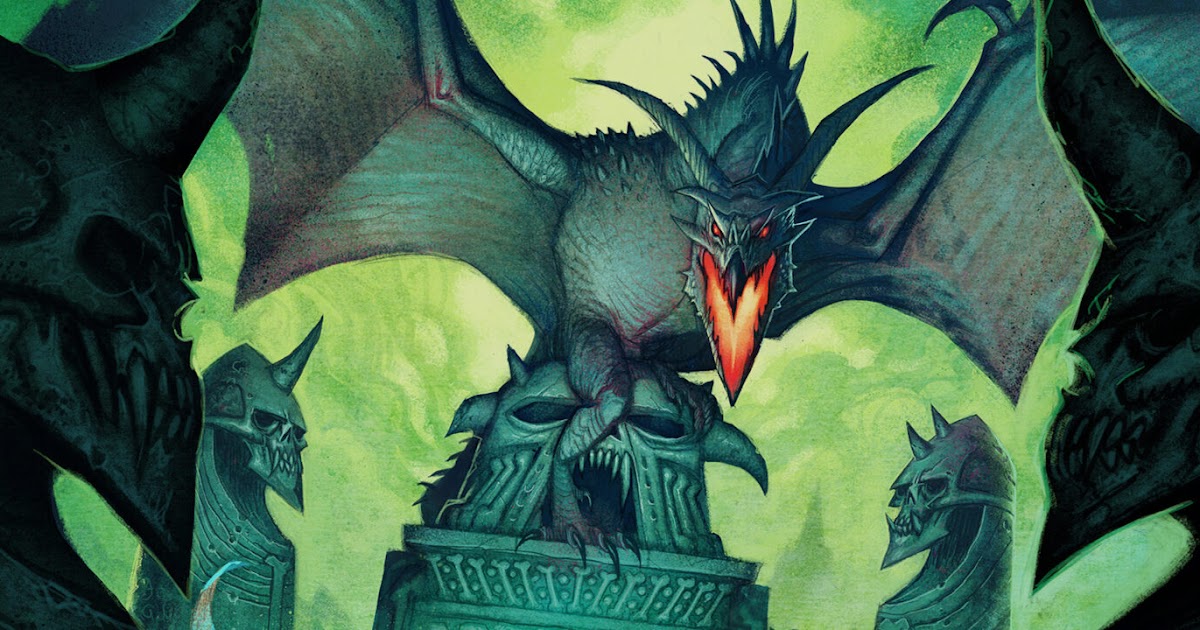SMOOSH JUICE
Initial Thoughts on Dragonbane

As I mentioned at the start of the month, my ongoing Dolmenwood campaign is on a short hiatus while one of the players is away traveling. In the meantime, another member of the group has kindly offered to run a few sessions of Dragonbane, Free League’s fantasy roleplaying game, and I’ve taken the opportunity to step out from behind the screen and join as a player. I jumped at the chance, not only because Dragonbane has been on my radar for a while, and this seemed like the perfect time to give it a try.
For those unfamiliar with it, Dragonbane is the modern English-language evolution of Drakar och Demoner, Sweden’s first major fantasy RPG, originally released in 1982. That game was built on Chaosium’s Basic Role Playing (BRP) system, adapted under license and inspired in part by Magic World and RuneQuest. Over the decades, Drakar och Demoner went through numerous editions in Sweden, each refining or reshaping its rules. In 2023, Free League acquired the rights and reimagined the game as Dragonbane, distilling its BRP roots into something faster, lighter, and more accessible. While it retains the BRP hallmarks, like skill-based resolution, opposed rolls, it swaps out percentile dice for d20s and favors simplicity wherever it can.
While I’ve played my fair share of BRP-based games over the years, most of my fantasy RPG experience comes from Dungeons & Dragons and that likely shapes how I see other systems in the genre. That said, Dragonbane feels immediately familiar in all the best ways. Like older editions of D&D, character creation is fast and to the point: you choose a kin (i.e., race), a profession (class), some skills, and you’re good to go. It’s more straightforward than making a character in RuneQuest and only marginally more involved than in D&D. You can feel the BRP ancestry throughout, but almost everywhere the system has been pared back to emphasize ease of play. The use of d20s streamlines resolution, and Dragonbane replaces modifiers with “boons and banes,” a system akin to advantage and disadvantage.
All of this is well and good, but what pleasantly surprised me was the combat system. I’m someone who often finds combat a necessary but uninspiring part of roleplaying games. I don’t dislike it outright, but I rarely look forward to it. In Dragonbane, though, combat has consistently been fun: brisk, dynamic, and full of opportunities for clever play. In fact, I’ve found myself anticipating combat encounters, which is not something I say lightly. It’s almost as if the Dice Gods are mocking me for having just written a post about my ambivalence toward combat mechanics. If so, I don’t mind. I’m grateful to have found a system that’s helping me understand what I do enjoy in RPG combat.
Each round, a Dragonbane can move and act. Special weapons or abilities can bend the rules in flavorful ways, but the core loop remains fast and approachable. Initiative is determined with cards rather than dice and reshuffles every round, introducing a layer of unpredictability. There are ways to act out of turn or swap initiative order, which adds some tactical flexibility. Beyond that, there are other mechanical wrinkles, such as morale checks, weapon breakage, special maneuvers, that bring the system to life without bogging it down.
That, for me, is what stands out about the Dragonbane combat system: it hits a sweet spot that’s hard to find. Too often, combat systems fall into one of two traps: they’re either so streamlined that they feel flat or they’re so loaded with options and subsystems that the pace suffers. Dragonbane threads the needle rather well in my opinion, offering just enough crunch to make combat engaging, but not so much that it becomes a slog. Whether this will remain my considered opinion over the long haul remains to be seen, but so far, it’s been a delight.
